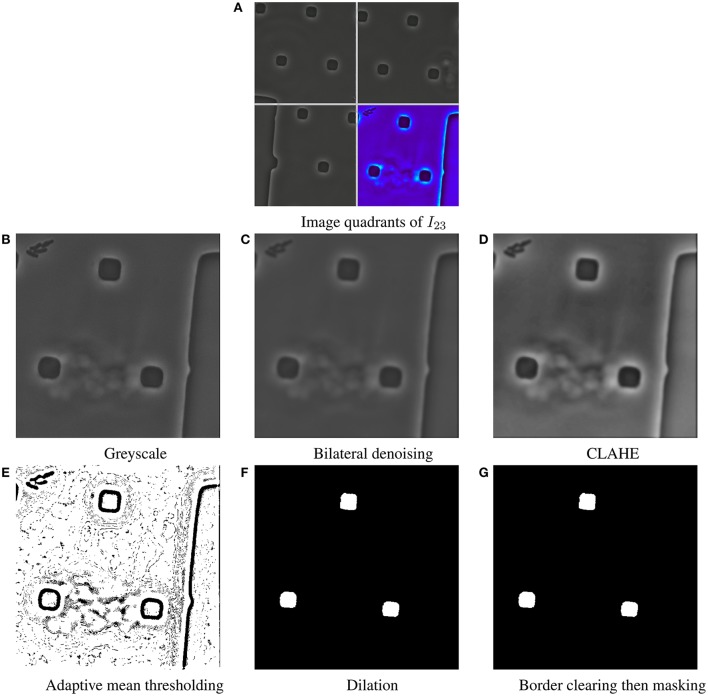Figure 2.
Example result of the preprocessing steps Dataset 1 (D1). (A) Quadrants of image I23 are delimited, by opaque white lines. The bottom right quadrant is rendered as a false-color image, so as to highlight edges in the image space. (B) The quadrant of interest is gray-scaled. We observe the particular polygons, as square-like polygons. They are an intrinsic part of the microfluidics chamber. (B–G) show the output of each preprocessing step on this particular quadrant. (C) The bilateral filter preserves edges, and reduces noise by employing a smoothing filter. (D) The contrast limited adaptive histogram equalization, or CLAHE, is used to improve the contrast of the image. This favors the contrast between the background, and the square-like polygons. (E) The adaptive mean threshold, computes thresholds for regions of the image with varying illumination. It results in a binary image, and a clear outline of the particular polygons. (F) Dilation, as a morphological operation, probes, and expands the square-like shapes contained in the input image. (G) Border clearing, and masking depict no effects. Such a coupling serves as a validation step so to palliate for any great image variability (e.g., rotation of objects entering/exiting the field of view).

